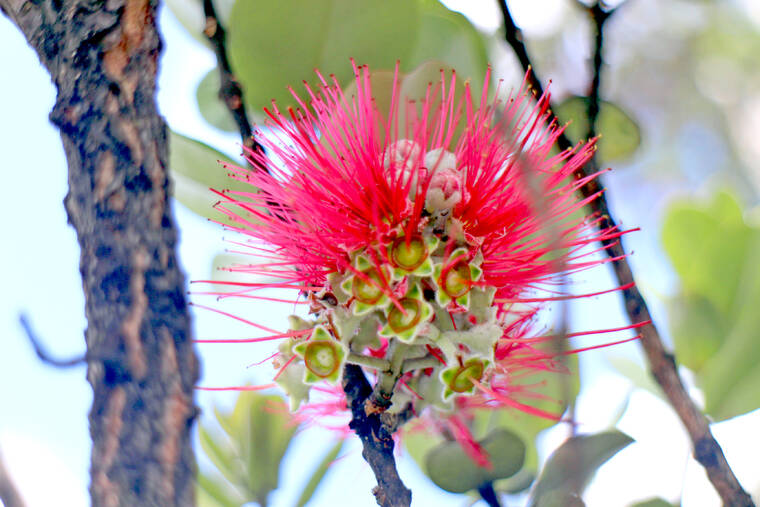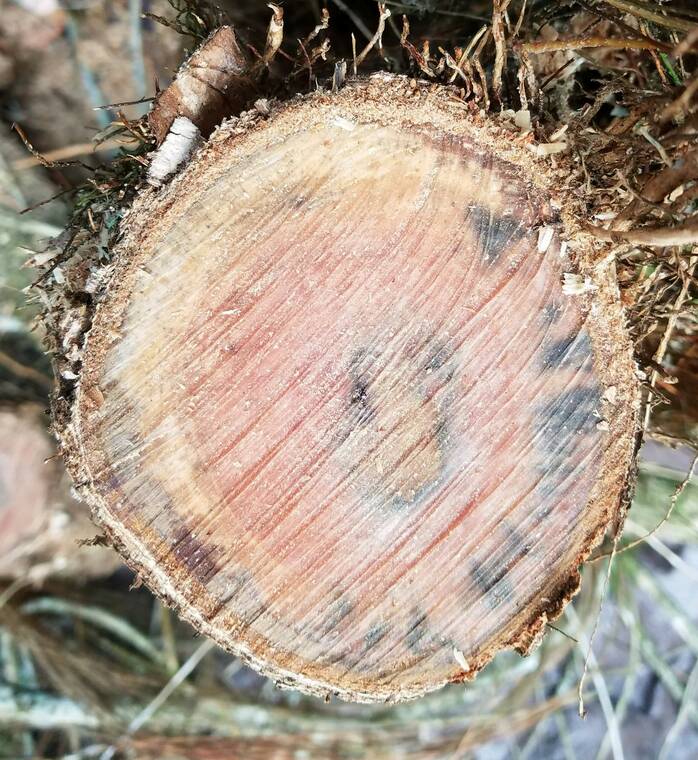1/2
Swipe or click to see more
COURTESY DLNR
The landscape ohia trees were infected with Ceratocystis huliohia, the less virulent strain of the fungal pathogen, according to the Hawaii Department of Land and Natural Resources.

2/2
Swipe or click to see more
STAR-ADVERTISER


State officials said rapid ohia death has been detected in three trees at a Maui elementary school campus.
The landscape ohia trees were infected with Ceratocystis huliohia, the less virulent strain of the fungal pathogen, according to the Hawaii Department of Land and Natural Resources.
Crews from DLNR and the Maui Invasive Species Committee on Tuesday removed the trees from the campus, and treated and sealed all cut stumps. Crews also collected all green waste into bags for proper disposal.
Tree materials were burned in a metal container off-site due to the proximity of the elementary school to surrounding homes. DLNR did not say which school campus the trees were on.
MISC also collected samples from nearby ohia trees for follow up monitoring.
Rapid ohia death, which is caused by two fungal species — C. huliohia and C. lukuohia — were first found killing trees on Hawaii island more than 10 years ago. The former may take months to years to kill ohia, while the latter can kill a tree within weeks.
Don’t miss out on what’s happening!
Stay in touch with breaking news, as it happens, conveniently in your email inbox. It’s FREE!
They infect ohia through open bark wounds, and choke off water-transporting vessels, causing leaves to quickly brown out and die.
Rapid ohia death was detected for the first time on Maui in the summer of 2019 in a lone tree on private property in East Maui.
That tree was also afflicted with C. huliohia. DLNR at the time said it appeared to be an isolated case, and treated it by burning it. In follow up aerial surveys later that year, rapid ohia death was not rediscovered.
Officials said the best way to protect ohia is to avoid injuring the trees, transporting them interisland, which is illegal, and moving ohia wood or vegetation around. People can also clean their hiking boots, gear, tools and vehicles before hiking or entering a wooded area.
